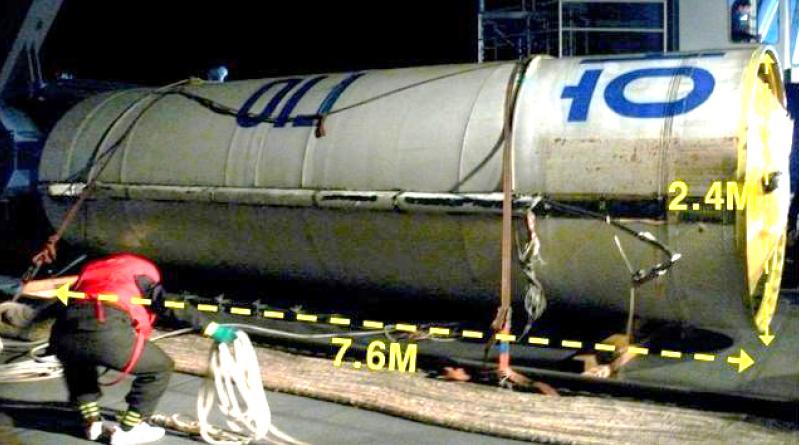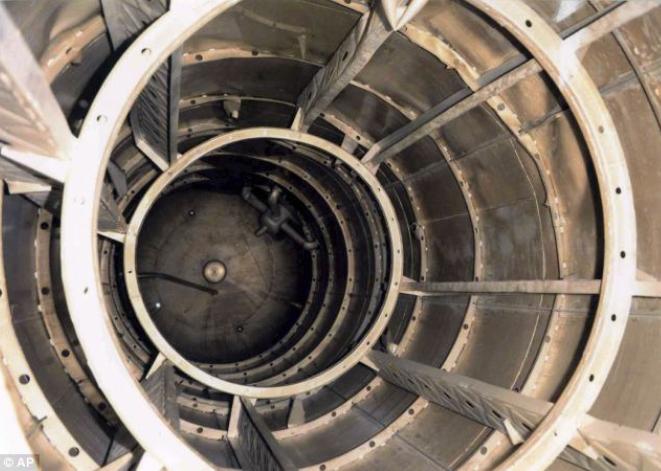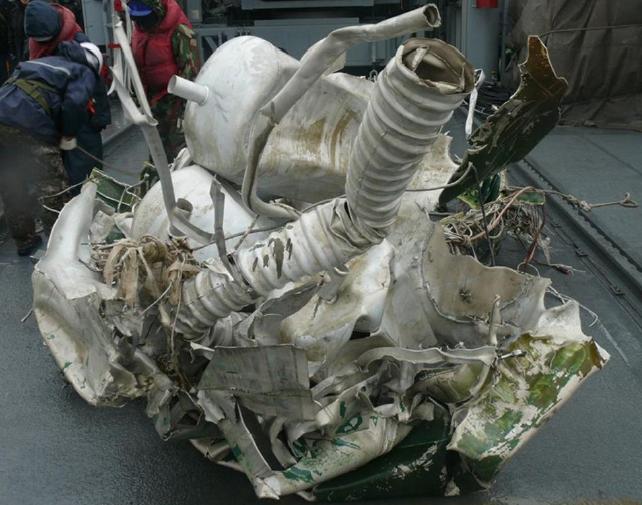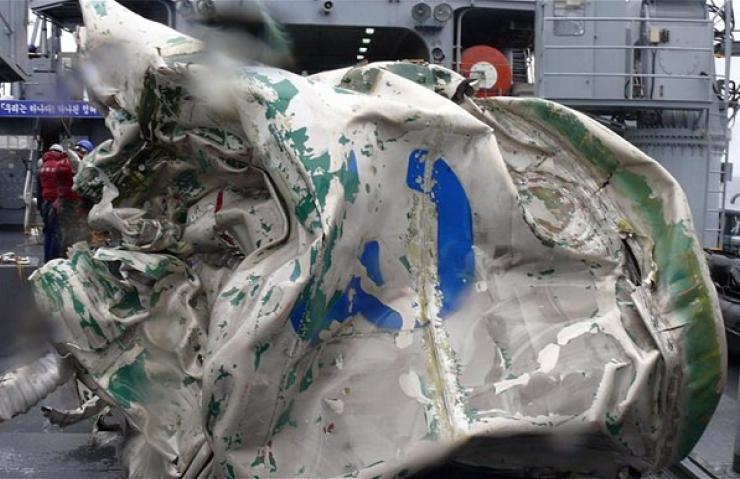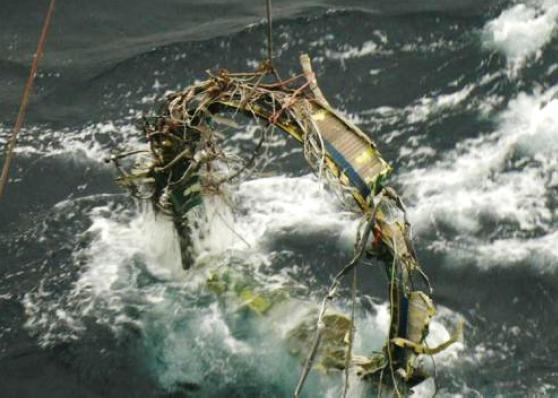Press reports now say South Korea has recovered four pieces of the first stage of the Unha-3 rocket that North Korea launched on December 11 (U.S. time). Since all these pieces were found in approximately the same area, they must all have come from the first stage.
The first and largest piece found was the oxidizer tank from the first stage, reported to be 7.6 m long by 2.4 m in diameter. Figure 1 shows on the left the tank that was recovered (being carried on the recovery ship, rotated by 90 degrees), scaled so it can be compared to a photo of the first stage of the launcher (compare markings) and a diagram showing the internal construction of the stage on the right. That diagram shows the oxidizer tank in blue sitting above the tan fuel tank, which is above the first-stage engines. The fuel and oxidizer are carried through pipes to the engines, where they ignite when combined in the combustion chamber to create thrust.
Figure 2 shows the tank from the side, including the cables that run down the outside of the tanks from the guidance system in the front of the rocket to the engines in the rear.
According to press reports, traces on the inner walls of the tank show that the first-stage oxidizer is a form of nitric acid called “red-fuming nitric acid,” which is the standard oxidizer used in Scud-type missiles. There had been some speculation that this stage might instead use a more advanced fuel with nitrogen tetroxide (NTO) as the oxidizer. Since the Nodong engines believed to power the first stage are scaled-up Scud engines, the use of RNFA is not a surprise.
There have also been claims that the stage uses a more advanced fuel called UDMH, but it appears instead to be the kerosene-based fuel used in Scuds. In his recent RAND study, Markus Schiller noted that a test Iraq performed using UDMH in a Scud engine gave poor performance, and that burning UDMH gives a transparent flame. The North Korean video of the launch instead shows an orange flame characteristic of Scud fuels (Figure 3 is an image from 12:44 into the video). These findings confirm that the stage is still Scud-level technology.
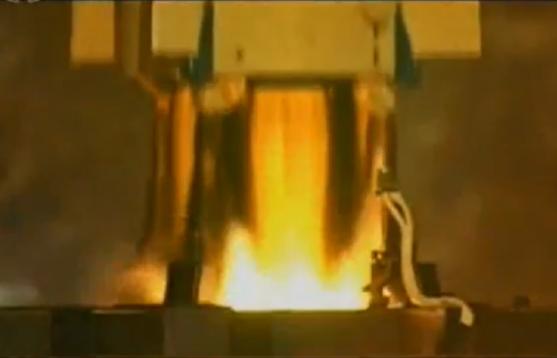
Figure 3. An image showing the flames coming from the first-stage engines several seconds after launch. (click to enlarge)
There have also been questions about what material was used to build the body of the first stage. The body of the Scud, and likely the Nodong, is made of steel, but reports say that the tank recovered is made from a lightweight aluminum-magnesium alloy, which is typically used for aircraft. This saves a significant amount of weight, which is important to allow its relatively low-thrust engines to get the launcher up to speed.
Examining this structure will give a good sense of the quality of construction and components used in building the rocket, and which components may have been imported. Early reports stated that “the eight panels from the first stage that were retrieved were crudely welded manually.”
South Korea released a picture of the inside of the tank (Figure 4). This shows the internal supports—called hoops and stringers—that give the tank structure and support its weight. These are then covered by thin metal sheets to form the tank walls. This kind of construction is fairly standard for liquid rockets.
Because this launcher uses turbo pumps to feed fuel and oxidizer from the tanks to the engines, the tanks do not need to be kept at high pressure, which allows the walls to be thin. The tanks are typically kept at low pressure —10-50 psi—which improves the flow of the propellant to the turbo pump (see Rocket Propulsion Elements, p. 204). The pressure is maintained by an inert gas, like nitrogen or helium, that is stored in pressurized bottles and released into the tanks as the fuel is burned. A second piece of debris (Figure 5) appears to show two of these bottles. This piece probably sits between the fuel tank and the engines.
A third piece recovered from the launcher is part of the fuel tank, shown in Figure 6. The blue “3” on its side can be seen in the launch photo in Figure 1.
The final piece recovered appears to be a support ring from the first-stage body (Figure 7).
No word yet if debris from the second stage has been found. It fell into the ocean off the coast of the Philippines.
Note added 1/2/13: Markus Schiller, who is an expert on rocket structure, believes that the bottles in Figure 5 are instead likely to hold the small amount of Tonka fuel that is used to ignite the engine. The Scud propellants, nitric acid and a version of kerosene (TM-185), are not hypergolic–they don’t spontaneously ignite when combined. So the Soviets designed the Scud to inject a small amount of Tonka fuel (called TG-02 by the Soviets) into the engine at launch since it would ignite when combined with nitric acid. The Scud used about 30 kg of TG-02 for this purpose.
Sources for figures: Fig. 2, Fig. 3, Fig. 4, Fig. 5, Fig. 6, Fig. 7


